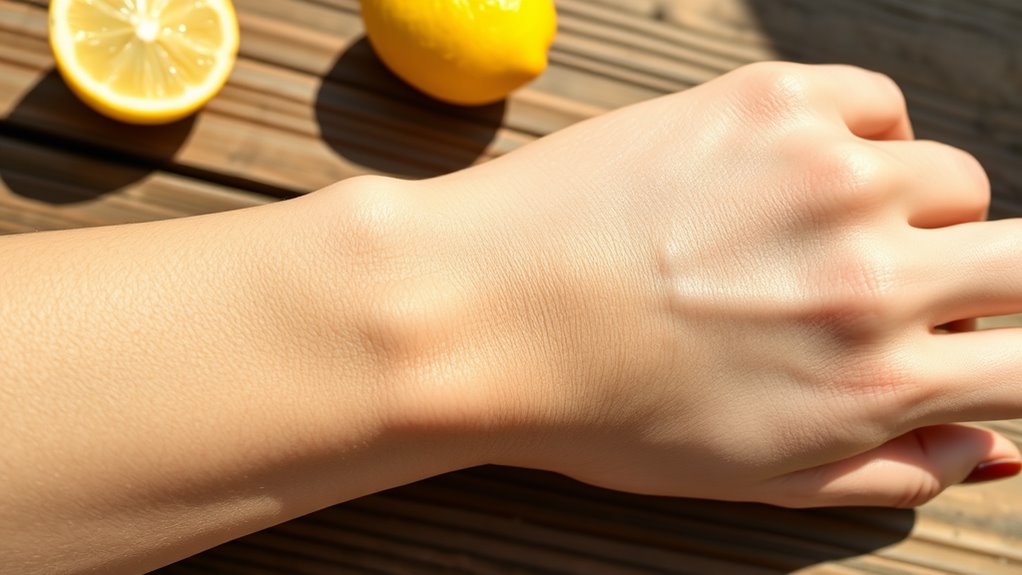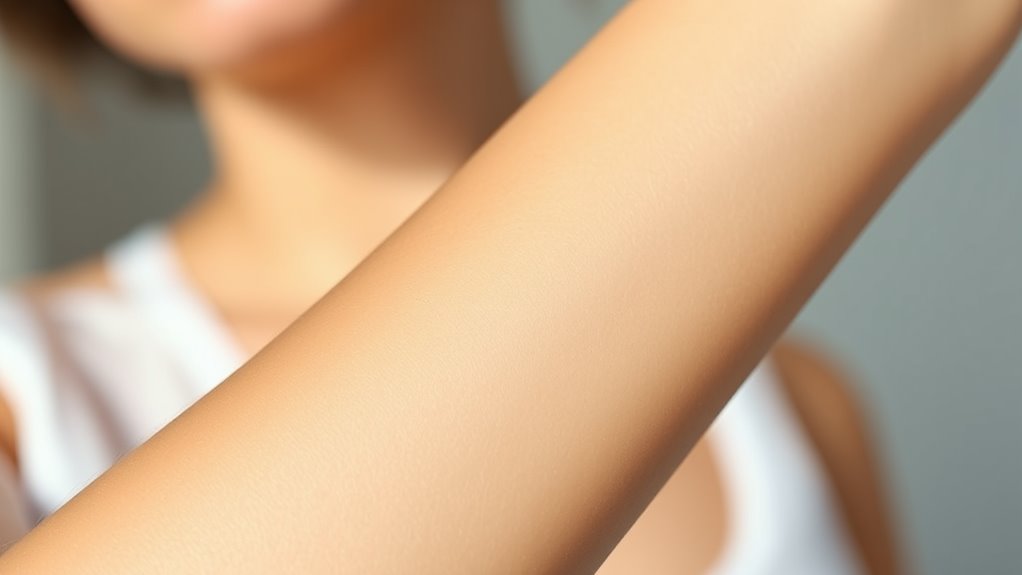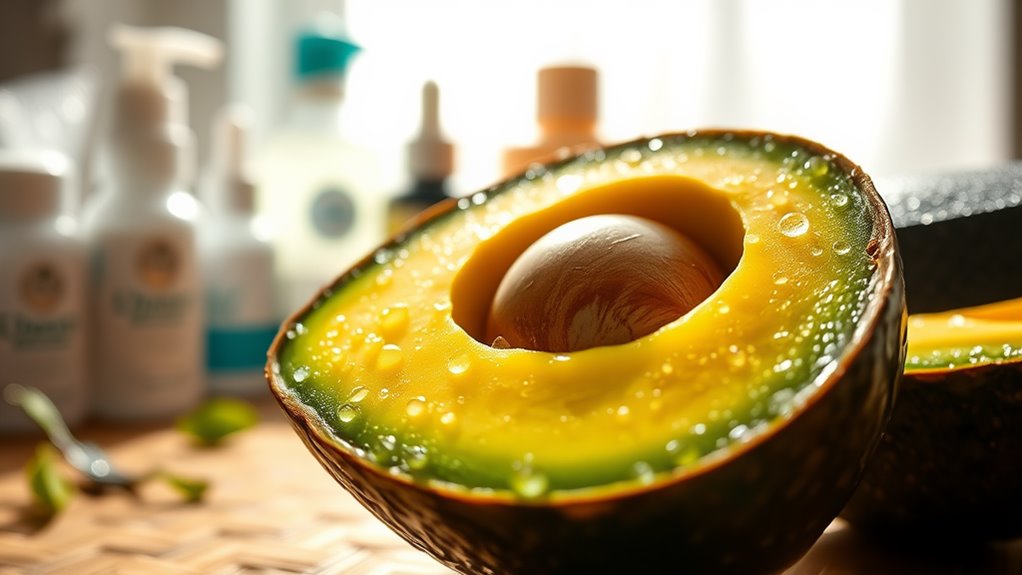Fix Chicken Skin at Home With Just One Ingredient!
You’ve probably dealt with those rough, bumpy patches on your arms or thighs, known as chicken skin or keratosis pilaris. It’s a common skin issue that clogs follicles, but you can tackle it at home using just one effective ingredient. Explore how this simple remedy smooths and soothes your skin, and uncover the best ways to apply it for lasting results.
Key Takeaways
- Apple cider vinegar is the key ingredient for treating chicken skin by exfoliating and unclogging follicles.
- Dilute it with equal parts water to avoid irritation before application.
- Apply the solution to affected areas using a cotton ball in circular motions.
- It reduces inflammation and promotes smoother skin texture through regular use.
- Perform a patch test first and use twice daily for optimal, visible results.
What Is Chicken Skin?
Chicken skin, medically known as keratosis pilaris, is a harmless condition where excess keratin clogs hair follicles, creating rough, bumpy patches on your skin.
It’s common on your arms and thighs.
For effective management, incorporating a 3-day treatment plan with natural ingredients can yield visible results in just three days.
While not curable, you can effectively manage it through chicken skin treatment at home, focusing on gentle exfoliation and hydration to unclog follicles, reduce bumps, and keep your skin smoother over time.
To enhance your routine, consider using a DIY scrub with natural ingredients as outlined in a simple 3-day treatment plan for noticeable improvements.
The Secret Ingredient Revealed
What could be the secret ingredient that transforms rough, bumpy skin from keratosis pilaris?
It’s apple cider vinegar, a natural source of acetic acid that effectively exfoliates dead skin cells and breaks down keratin plugs in your follicles.
Scientifically, it reduces inflammation and promotes cell turnover for smoother texture.
As a practical, cost-effective option, you’re empowering your skincare routine with this proven remedy. Additionally, this remedy aligns with dermatologist-approved practices for managing the condition effectively.
Regular use of apple cider vinegar has been shown to improve the appearance of keratosis pilaris through its anti-inflammatory effects.
Simple Application Methods
Applying apple cider vinegar for keratosis pilaris is straightforward and effective with these three key methods.
First, you dilute it with equal parts water, then apply it to affected areas using a cotton ball, patting gently.
Second, you incorporate it into your nightly routine, massaging in circular motions for even coverage.
Third, you always perform a patch test on a small skin area first to check for reactions. To maximize benefits, you can also use it as a full-body rinse, drawing from its success in eliminating dandruff.
Additionally, apple cider vinegar’s pH-balancing properties can help maintain optimal skin pH, potentially reducing irritation associated with keratosis pilaris.
Benefits of This Treatment
While apple cider vinegar offers a straightforward application, it delivers several key benefits for keratosis pilaris by gently exfoliating the skin, reducing inflammation, and restoring pH balance to smooth rough patches and minimize bumps.
This process unclogs your follicles, helping you reduce bump visibility.
It also soothes irritation, promoting healthier skin.
This treatment can also help with strawberry legs, which often stem from similar follicular issues as discussed in comprehensive skin care guides.
Additionally, incorporating natural oils can enhance the treatment by providing deep hydration and aiding in the reduction of bumps for even smoother results.
Tips for Effective Use
To maximize apple cider vinegar’s benefits for keratosis pilaris, start by diluting it properly—mix one part vinegar with three parts water to avoid irritation. For enhanced benefits, you can incorporate tea tree oil into the mixture to help combat potential bacterial causes of skin issues.
Apply the solution using a cotton ball on your affected areas.
Gently rub it in circles, let it sit for a few minutes, then rinse thoroughly.
Always perform a patch test first to prevent reactions, and use it twice daily for best results.
The acidic properties of apple cider vinegar, known for their soothing effects, can also help reduce skin inflammation associated with various irritations.
Long-Term Maintenance Strategies
Maintaining healthy skin against keratosis pilaris involves consistent strategies that extend your apple cider vinegar routine.
You should incorporate daily moisturizing with natural oils to lock in hydration, gently exfoliate once or twice weekly to remove dead skin cells, maintain a balanced diet rich in vitamins A and C, and regularly monitor your skin’s progress.
Adjust the routine based on your body’s response for long-term benefits.





